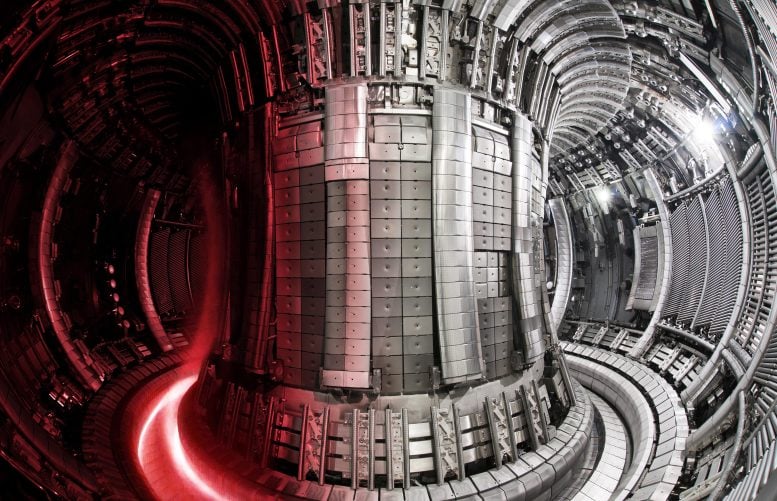
Nuclear fusion facility: JET interior with superimposed plasma. Nuclear fusion energy could be a pivotal sustainable energy source to complement renewables. Credit: UKAEA
The old joke is that nuclear fusion is always 30 years away. However, the dream of plentiful clean energy is no laughing matter as we meet an ITER researcher to catch up on progress at the reactor facility.
By creating light and heat through nuclear fusion, the Sun has fueled life on Earth for billions of years. Given that incredible power and longevity, it seems there can hardly be a better way to generate energy than by harnessing the same nuclear processes that occur in stars, including our own sun.
Nuclear fusion reactors aim to reproduce this process by fusing hydrogen atoms to create helium, which releases energy in the form of heat. Sustaining this at a large scale has the potential to produce a safe, clean, almost inexhaustible power supply.
The quest began decades ago, but could a long-running joke that nuclear fusion is always 30 years away soon start to look dated?
Some hope so, following a major breakthrough during a nuclear-fusion experiment in late 2021. This came at the Joint European Torus (JET) research facility in Oxfordshire, UK, in a giant, doughnut-shaped machine called a tokamak.
Inside, superheated gases called plasmas are generated in which the fusion reactions take place, containing charged particles that are held in place by powerful magnetic fields. Such plasmas can reach temperatures of 150 million degrees Celsius, an unfathomable 10 times hotter than the Sun’s core.
In a sustained five-second burst, researchers in the EUROfusion consortium released a record-breaking 59 megajoules (MJ) of fusion energy. This was almost triple the previous 21.7 MJ record set at the same facility in 1997, with the results touted as “the clearest demonstration in a quarter of a century of the potential for fusion energy to deliver safe and sustainable low-carbon energy.” Follow the link to learn more about the successful nuclear fusion experiment at JET.
The results provided a major boost ahead of the next phase of nuclear fusion’s development. A larger and more advanced version of JET known as ITER (meaning “The Way” in Latin) is under construction on a 180-hectare site in Saint-Paul-lès-Durance, southern France.
ITER, which is being built as a collaboration between 35 nations, including those in the EU, is aimed at further firming up the concept of fusion. One of the most complicated machines ever to be created, it was scheduled to start generating its first plasma in 2025 before entering into high-power operation around 2035 – although researchers on the project expect some delays because of the pandemic.
Major milestone
The results at JET represent a major landmark, said Professor Tony Donné, program manager of the EUROfusion project, a major consortium of 4,800 experts, students, and facilities across Europe. “It’s a huge milestone – the biggest for a long time,” he said.
“It’s confirmed all the modeling, so it has really increased confidence that ITER will work and do what it’s meant to do.” While the energy generated at JET lasted just a few seconds, the aim is to ramp this up to a sustained reaction that produces energy.
The results were the culmination of years of preparation, with Prof Donné explaining that one of the key developments since 1997 involved changing the inner wall of the JET vessel.
“It’s a huge milestone in nuclear fusion – the biggest for a long time. It’s confirmed all the modelling.”
— Prof Tony Donné, EUROfusion
Previously, the wall was made of carbon, but this proved too reactive with the fuel mix of deuterium and tritium, two heavier isotopes – or variants – of hydrogen used in the fusion reaction. This resulted in the formation of hydrocarbons, locking up the tritium fuel in the wall.
In the rebuild, which involved 16 000 components and 4 000 tonnes of metal, the carbon was replaced with beryllium and tungsten to reduce tritium retention. Ultimately, the team was able to cut the amount of trapped fuel by a large multiple, contributing to the success of the recent fusion shot.
DEMO run
In preparation for the next stage of fusion’s epic journey, upgrades to JET ensured that its configuration aligns with the plans for ITER. Further in the future, the next step beyond ITER will be a demonstration power plant known as DEMO, designed to send electricity into the grid – leading on to fusion plants becoming a commercial and industrial reality.
“ITER is a device which will create 10 times more fusion energy than the energy used to heat the plasma,” said Prof Donné. “But as it is an experimental facility, it will not deliver electricity to the grid. For that, we need another device, which we call DEMO. This will really bring us to the foundations for the first generation of fusion power plants.”
Prof Donné added: “JET has shown now that fusion is plausible. ITER has to show that it’s further feasible, and DEMO will need to demonstrate that it really works.”
Planned to provide up to 500 megawatts (MW) to the grid, he thinks it is realistic for DEMO to come into operation around 2050. “We hope to build DEMO much faster than we built ITER, making (use of the) lessons learned,” he said.
Yet there are other key challenges to overcome on the way to getting nuclear fusion up and running. Not least is that while deuterium is abundant in seawater, tritium is extremely scarce and difficult to produce.
“If we get fusion up and running, then really we have a very safe and clean energy source which can give us energy for thousands of years.”
— Prof Tony Donné, EUROfusion
The researchers, therefore, plan to develop a way of generating it inside the tokamak, using a “breeding blanket” containing lithium. The idea is that high-energy neutrons from the fusion reactions will interact with the lithium to create tritium.
Essential energy
Prof Donné said nuclear fusion could prove a pivotal green and sustainable energy source for the future. “I would say it’s essential,” he said. “I’m not convinced that by 2050 we can make the carbon dioxide transition with only renewables, and we need other things.”
And although he says the current method of creating nuclear energy through fission is becoming safer and safer, fusion has key advantages. Proponents for ITER talk of benefits such as an absence of meltdown risk, adding that nuclear fusion does not produce long-lived radioactive waste and that reactor materials can be recycled or reused within 100 to 300 years.
“It’s definitely much safer,” said Prof Donné. Referencing the stigma carried by nuclear energy, he said, “What we see when we interact with the public is that people very often haven’t heard about nuclear fusion. But when we explain the pros and cons, then I think people get positive.”
Referring to Lev Artsimovich, dubbed the “father of the tokamak,” he said, “Artsimovich always said fusion will be there when society really needs it. If we get fusion up and running, then really we have a very safe and clean energy source which can give us energy for thousands of years.”
Research in this article was funded by the EU.
This article was originally published in Horizon, the EU Research & Innovation Magazine.

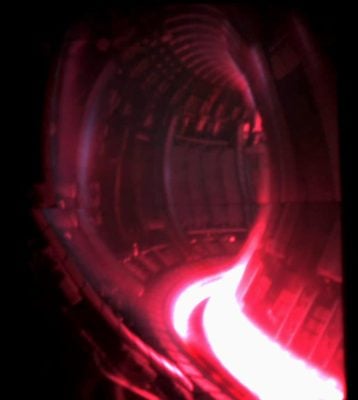
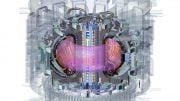


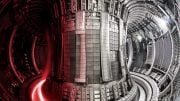
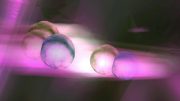
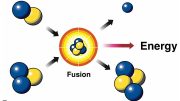
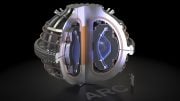
“he thinks it is realistic for DEMO to come into operation around 2050.”
That is just short of 30 years. What a coincidence!
You took the words right out of my mouth.
After the hype of the click bait title, the article doesn’t reveal the real truth about the timeline and issues with practical nuclear fusion energy production until almost the end of the article in the following statements, “…he thinks it is realistic for DEMO to come into operation around 2050. “We hope to build DEMO much faster than we built ITER, making (use of the) lessons learned,” he said.
Yet there are other key challenges to overcome on the way to getting nuclear fusion up and running. Not least is that while deuterium is abundant in seawater, tritium is extremely scarce and difficult to produce.
The researchers, therefore, plan to develop a way of generating it inside the tokamak, using a “breeding blanket” containing lithium. The idea is that high-energy neutrons from the fusion reactions will interact with the lithium to create tritium.”
The article doesn’t mention that the lithium “breeding blanket” idea has been around since at the least the 1970s and perhaps earlier. I remember reading about it as a physics student in the late 1970s to early 1980s. Yet “Through its Test Blanket Module (TBM) program, ITER will be the first fusion device to test this essential concept of tritium self-sustainment.” (from https://www.iter.org/sci/FusionFuels#:~:text=Blankets%20containing%20lithium%20are%20referred,fuels%20required%20to%20sustain%20it. )
So this “essential concept” has not been tested in about 50 years since its conception! If the tests show some unforeseen issues with this essential concept for tritium self-sustainment, how many more years beyond the 2050s will that add before practical nuclear fusion energy production is realized?
This sounds great, but I’m wondering about the waste produced. I’m no scientist and I don’t pretend to understand nuclear energy, but I know that all nuclear energy reactors create radioactive waste and we have more of that waste every day these reactors are in operation and no place to store it. I don’t consider that “clean”. I didn’t see anything in this article about the waste that would be created (or not created?) in this new “breakthrough” process.
In a fusion type nuclear reactor the only by-product of the reaction is Helium gas and neutron radiation. The helium is safe, and the Neutron radiation is stopped by several feet of water/concrete or other substance. The substances hit by the neutrons can become slightly radioactive themselves, but they decay very quick. That means the only radioactive waste produced by a fusion reactor is the material around the reactor when it’s decommissioned/refurbished, and the radiation decays after just a few decades. Not the centuries or millennia long needed for the spent nuclear fuel used in our current reactors.
You are mixing up fusion with fission. Nuclear fission (the current tech) uses and produces radioactive material. Fusion basically converts hydrogen to helium and in the process releases a tremendous amount of energy. Because we’re dealing with hydrogen and helium, there are no radiative elements used or created.
The French? Wonderful people who take lunch from 10am-3pm…then go home. But I agree that the article is badly written and misleading, at least!
Let’s see…30 years in French time is…Well somebody else will beat them to it.
Perhaps Eric, you should reread the article and reacquaint yourself with history:
1) Who helped America gain independence from GB and never sent a bill for services rendered? The French!
2) Who partnered with other Euro countries to produce the Concorde? The French! The US version is still stuck… on paper.
3) Is the US part of the group of 35 countries involved in this project? Thankfully, no!
4) Should you, Eric, come visit Europe and see part of our world? No, there is nothing here that would interest you. Stay home with Homer Simpson. In 30 years, you will still be watching reruns of KUWTK!! By the way, lunch is 12-2pm.
As a physicist based at CERN in Switzerland, I’ll skip the ignorant and unproductive culture shaming and get right to the science. The titrium loss incurred by incidental hydrocarbon generation was not the most difficult hurdle. The advances in electromagnetic field technologies has been the most important development since the 97 experiment. We are now capable of generating extremely powerful,adaptable, and stable EMFS with layers of redundancy built into the powersourcing mechanism. The current tech(which is continually improving, is capable of superheated plasma suspension well beyond the amount required to power the entire EU, if not the world, would we have the resource priority fossil fuel producers enjoy to build high volume tokomaks. As for including lithium in the neutron wall, the problem was a matter of extrusion and homogeneousation of lithium with beryllium and tungsten. Lithium alone is not suited for the containment of the supercharged particles the reqction produces. Ideally the ratio would be less than 10% lithium, but that requires maximizing surface area through novel extrusion methods. The current TBM (the term was coined by JET and originally stood for the Tungsten Beryllium Method…the new meaning is a bit tongue and cheek/homage), though untested in real-world fusion application as far as I know, is highly efficient in terms of particle cantainment as well as titrium retention and production. A perfect system would be almost self sustaining in that the titrium fuel element would replenish itself indefinitely without blanket decay. While that might be a ways away,meticulous trial and error will inform the most effective and safest alloy ratio and formation. So no, it’s not the technology that’s 30 years away. It’s the logistical challenge of a massive , incredibly complex power plant, most likely housing multiple massive tokamaks, safely attached to the relatively ancient electrical grids. We could see self sustaining fusion with a base 1/10 input output ratio before 2030.
Is there any concern about, or plans to mitigate the distortion of the local geomagnetic field? Has anyone taken measurements of the geomagnetic field when these Tokamaks are operating? Many animals, particularly birds, appear to navigate based on the geomagnetic field. It would be an unimaginable tragedy if species of migrating birds became extinct because they could not find their destinations.
Your defense of the French and of Europe as a whole is justified, however, the United States is a partner nation in the ITER effort.
Bravo!
For the people complaining, the article explains it’s the wall material being changed from carbon to tungsten and beryllium that allowed the breakthrough of not getting all the fuel stuck in said wall.
Senator Howard Baker (R-Tenn) tried to get Congress to fund the building of a fusion reactor at the Oak Ridge National laboratories in the early 70’s. Of course, Congress said “no”.
We may have had fusion reactors around the World by now, 50 years later. Thanks again to our wonderful Congress for screwing up.
The thanks should really go to the voters who elected them. Or, perhaps to the newspapers that supported the candidates, because everyone can’t meet and know the candidates and usually depend on recommendations.
278 watt hours. Let me save you the trouble since the author didn’t think it would be good or ok to include. Also, hi five on the coverage of this breakthrough where it begins several paragraphs in, and then the bigger and more exciting news that they’re still 30 years away.
Not sure why I’m commenting at all about the editorial stuff here, but for ITER I’m just glad the laser amps weren’t an expensive disaster, and that the entire thing didn’t immediately melt into an interesting doorstop shape on its first trial.
So, even with this “major breakthrough” practical nuclear fusion energy production is still about 30 years away.
After the hype of the click bait title, the article doesn’t reveal the real truth about the timeline and issues with practical nuclear fusion energy production until almost the end of the article in the following statements, “…he thinks it is realistic for DEMO to come into operation around 2050. “We hope to build DEMO much faster than we built ITER, making (use of the) lessons learned,” he said.
Yet there are other key challenges to overcome on the way to getting nuclear fusion up and running. Not least is that while deuterium is abundant in seawater, tritium is extremely scarce and difficult to produce.
The researchers, therefore, plan to develop a way of generating it inside the tokamak, using a “breeding blanket” containing lithium. The idea is that high-energy neutrons from the fusion reactions will interact with the lithium to create tritium.”
The article doesn’t mention that the lithium “breeding blanket” idea has been around since at the least the 1970s and perhaps earlier. I remember reading about it as a physics student in the late 1970s. Yet “Through its Test Blanket Module (TBM) program, ITER will be the first fusion device to test this essential concept of tritium self-sustainment.” (from https://www.iter.org/sci/FusionFuels#:~:text=Blankets%20containing%20lithium%20are%20referred,fuels%20required%20to%20sustain%20it. )
So this “essential concept” has not been tested in more than 50 years since its conception! If the tests show some unforeseen issues with this essential concept for tritium self-sustainment, how many more years beyond the 2050s will that add before practical nuclear fusion energy production is realized?
Continue with your experiments and remember the fission process is part of the fuel to get rid of plutonium waste and turn base metals into gold or silver or whatever you want. Long way to go unless you want to end up with stuff you don’t want laying around.
How much energy was consumed to make that record amount?
Thinking our best bet at developing clean abundant energy is to catch one of these UAVs scooting around, find out what forces they interact with. Just as likely as dealing with a primordial monster like fusion.
JP asked “How much energy was consumed to make that record amount?” The answer is a lot more than came out. They’re under great pressure to announce any kind of progress, so the tiniest thing gets overblown, then gets hype headlines. I suggest the goal is nearer 50 years away as there’s a fundamental lack of understanding of exactly what they’re attempting. I’ve studied AGN closely, toroidal plasma accelleration rings and the hottest places in the universe, forming the ‘superluminal’ quasar jets as they grow. Lithium is the key there. They suggests that if we successfully ‘seed’ one it’ll grow out of control. Luckily we’re not close yet.
Why does nobody ask the tough questions like you did Peter?
The Big Bang theory math is 0=1 because the universe was “created”, laws be damned. This equation created a new equation for fusion that is 1+1=2.1. Science is convinced it is ok to use these two equations even though they don’t work.
You should check out my comment. The ultimate energy in our universe is going to use the particles science doesn’t understand because the Big Bang theory made gravity produce all the energy we see. That isn’t what did it, a collision in space did. Gravity can’t do everything it has been forced to do.
When two protons are fused together to make an atom with two protons, is that going to produce a net-gain of energy?
No.
It is like saying 1+1 is going to equal 2.1.
When the electricity is cut off, does the fusion reaction go out?
Yes.
Where is the “run-away” reaction that is supposed to be the “most efficient reaction in the universe”? What is the catalyst for this reaction? The electricity scientists use? In fission reactors, once the reaction is started, it is self sustaining. Fusion should be self sustaining as well. Wouldn’t it have to be? How will it do it?
Just because our current theories state as a fact that fusion is the ultimate energy of the universe, is this fact panning out? The answer is no. It isn’t like the reaction is almost getting created, it is being created. It has been created for 80 years. When will it show signs of actually working? If it hasn’t after so many decades, shouldn’t that be deemed a problem? Is the inability for fusion to work yet more proof that the Big Bang theory is wrong?
The true minimum entropy energy in our universe is not going to involve protons, it will involve quarks. This energy is also not going to involve electricity, it will involve dark matter. Both of these fundamental particles work together to make black holes the most powerful objects in the universe. The true “strong force” in our universe is between quarks and sterile electron neutrinos. Once quarks have been separated from a sufficient enough reaction, it is the sheer density and pressure of space that keeps the quarks apart indefinitely. Space is the unlimited catalyst for the reaction that humans do not need to produce. Space is made of a field of extremely pressurized sterile electron neutrinos. As a result, in the quest for the quarks and neutrinos to attempt to fuse back together, the neutrinos are thrown from the plasma as the most powerful electromagnetic radiation in the universe which are cosmic and gamma rays. Black holes do not give off optically visible light because gamma rays do not produce visible light. Gravity “holding” the light in the black hole is a misconception due to the Big Bang theory. All black holes must emit energy just like Stephen Hawking surmised.
Besides, tritium costs $30,000 a gram. How will that make this energy”cheap”? Also, back when our universe was supposedly only made of three elements, it didn’t get to pick and choose what types of hydrogen it got to use for fusion. The neverending quest for this energy just never seems to make sense. However, God forbid any human that tries to discredit the fact that fusion works. This means that human doesn’t believe in the Big Bang theory and should be banned from all conversation. It really is an amazing time in science we live in now. A Belgian priest has dictated physics and astrophysics for 100 years because he wanted to force his beliefs on science and “create” the universe for us. That isn’t what happened and the assumptions made on this premise make science believe fusion will work. It is a truly amazing situation.
take it easy Mike. take a deep breathe and hit the pipe
Maybe you need to hit the pipe and listen.
Did you see the article that just came out about how the scientists noticed the more electricity went into the reaction, the COOLER the reaction got? This happened 12 years ago and got buried. Do you know why this happened? Because of precisely what I said in my previous comment. The Big Bang theory is a complete joke but since it states fusion is a fact, it is going to be a fact no matter what evidence discredits it. Science will waste trillions of dollars on fusion just because a bad theory told them to do it.
In about thirty years lol.
How though? It baffles the mind , breaking the laws of thermodynamics by putting out more energy than put in, and promising fusion (the energy of a star)
Meanwhile, we have 75 years of experience with fission that quietly produces 20% of US electricity. We are working on 4th-5th generation reactor designs with the prospect of using waste from old reactors as fuel in new (but tried and tested) fast breeder reactors. Fusion is good to research but we can’t wait for it.
No one could tell those guys to use beryllium at the outset and without further ado, instead of carbon? Word is they are not very well organized in fact (videoc).
Well, the way our dear professor describes the latest advances in fusion research, it apparently sounds nice and dandy – However, if fusion ever produces commercial power it will be a very expensive commodity that only rich countries will be able to afford. I have read practically hundreds of articles on this subject over the years and rarely the issue of who in reality can afford fusion energy other than the “traditional” rich countries such as the United States. The question is, how will the majority of the third world countries be able to afford and acquire this fusion energy? So, any genius(es) out there can share some ideas how this can be addressed or even resolved? Thank you. Carlos V. Ramírez, Mechanical and Industrial Engineer.
Like most popular fusion energy articles this contained just promotional hype with no countering positions. Those, interested in critical analysis, should search for the following articles and videos.
ITER is a showcase … for the drawbacks of fusion energy
What No One Else Is Telling You About Nuclear Fusion (YouTube)
Former fusion scientist on why we won’t have fusion power by 2040 (YouTube)
How close is nuclear fusion power? (YouTube)
The Theranos Trial Shows Why We Should Be Suspicious of Nuclear Fusion
All those, who work in such fields and promote it have to reject the following statement and report in order to justify their lengthy development dreams.
UN chief: World has less than 2 years to avoid ‘runaway climate change’
https://thehill.com/policy/energy-environment/406291-un-chief-the-world-has-less-than-2-years-to-avoid-runaway-climate
IPCC report: ‘now or never’ if world is to stave off climate disaster
https://www.theguardian.com/environment/2022/apr/04/ipcc-report-now-or-never-if-world-stave-off-climate-disaster
Can you cite ANY long-range forecast of climate that was correct? Even weather forecasts for rain 5-days into the future have a high false-positive rate for most of the world. Areas with a Mediterranean climate, like Californian, where it tends to rain over large areas for an extended period (Winter) have reliable precipitation forecasts, and a very low rate of false-negatives. Other places in the world don’t do as well.
“World has less than 2 years to avoid ‘runaway climate change’”
That 2018 prophesy deadline has come and gone! Short-term climate forecasts are unwise because there will still be people alive who remember the forecast. Are you aware that there has been no statistically significant global warming for 7 years and 10 months?
Big mistake. Big waste of resources NOT SAFE! Look up scientist now retired that was instrumental. We know this is dangerous stupidly expensive, the worst possible thing we need.I have a degree in Physics an my son in Material Science. This is mind blowingly Crazy!
So it still is about 30 yrs away and your solution is dependent on strip-mined lithium. That’s a significant bug to work out before it will be a scalable and financially feasible solution.
Either way, fusion or ‘sustainable’ energy resources, lithium will be a critical component. I suspect that lithium-ion batteries will put more pressure on lithium supplies than will fusion reactors.
A successful science experiment is one thing; a replicable commercially viable device that can be manufactured by the thousands is something else. Let’s see how long that takes.
Sounds like it is still 30 years away.
The hype of “limitless” energy has fueled a good lifestyle for many researchers in this field. And someday (2050?) they may be able to produce a reactor that can generate more energy than it consumes (heavy on the MAY)
But the dirty secret is that there is no fuel available for the thing! The idea that high-energy neutrons from the fusion reactions will interact with a lithium blanket to create tritium is a scam. That reaction requires Lithium-6, a very scarce material.
Look at how many here fell for the clickbait!
The lede is wrong (that’s not even a joke). The “old joke” is this: “Nuclear fusion is the energy source of the future. . . and always will be.”
Wow! So many geniuses here in the comments (I’m not one of them I’ll admit) – you can tell they are true geniuses by there comments, references to proven sources (like YouTube videos) and self affirmation of the same.
I’m sure if only a small fraction of them would lend a small fraction of their mental prowess to the issues of fusion power, it could all be solved [or proven as the worst idea ever that should never be considered] by say . . . next Tuesday? /s
On a more serious note:
1. Yes, at this time there is a negative net power balance for fusion – that’s one point we are doing better at (getting to a net positive balance) each year. But yes, there is still more work to be done.
2. On radioactive products, Tritium is radioactive (a beta emitter) & activation of the reactor’s structural material by intense neutron fluxes is also a factor. While it is not perfect (I know of nothing that is), it’s much less than fission reactors (both in quantity, intensity and half-life time frames).
3. I wish fusion power was already mature and operational on a wide scale, but it’s not yet. If it were simple and easy it would be, but again, it’s not (simple and easy that is). See a comparative example below for the steam engine (just a basic steam engine – nothing fancy like we have today).
In 1698 Thomas Savery patented a pump with hand-operated valves to raise water from mines by suction produced by condensing steam. Richard Trevithick in England didn’t demonstrate a steam locomotive until Feb 1804 against a horsecar route in Wales (at an average speed of about 5 MPH). That only took ~106 years to get going.
Thanks, Rick
P.S. As a person of French descent I would like to point out that “we French” have a long history of invention/discovery in our own right (Canning by Nicolas Appert in 1809, Pasteurization by Louis Pasteur and Claude Bernard in April 1862, Radium by Pierre and Marie Curie in 1898, Calculator by Blaise Pascal in 1642, Pitot tube by Henri Pitot in 1732, Metric system, Radioactivity by Henri Becquerel in 1896, CRISPR/Cas9 gene editing by Emmanuelle Charpentier and American biochemist Jennifer Doudna in 2012, etc).
Had me going like hell yell then dam another 30 years passed me off
It doesn’t put out more energy than is out in. It is that it releases more energy than is added, most of the energy is locked as potential energy. It is like robbing a bank. You can get it more money than YOU put in but that is because there is a lot of money in the bank besides the money that you put in. The arguments being made are like pseudoscientific trolling, which is a shame. A bunch of grown men autofalaciating and calling it a relationship.
It doesn’t put out more energy than is put in. It is that it releases more energy than is added, most of the energy is locked as potential energy. It is like robbing a bank. You can get out more money than YOU put in but that is because there is a lot of money in the bank besides the money that you put in. A lol ot of the arguments being made are merely pseudoscientific trolling, which is a shame. A bunch of grown men autofallaciating and calling it a relationship.
It’s been created for 80 years and never created more energy than was put in. That’s a simple fact. Now, an article came out, that will be buried of course, that states 12 years ago, the scientists noticed the more electricity they put in to the reaction, the cooler it got. That’s because the electricity is adding electrons to the reaction which actually maximizes the entropy of the reaction, not minimizes it. The finding happened 12 years ago. In the relentless pursuit of money for nothing, it was buried.